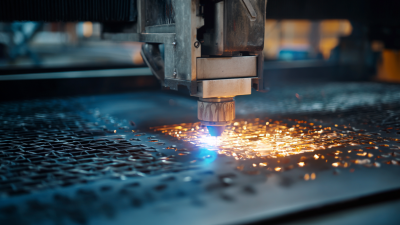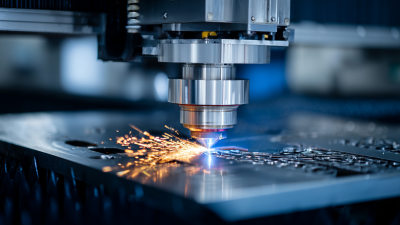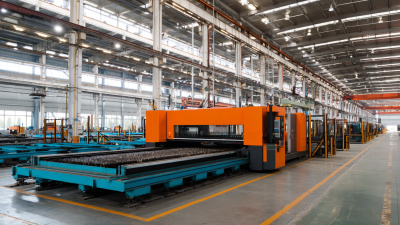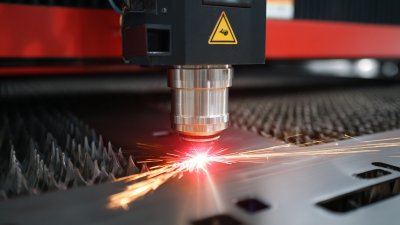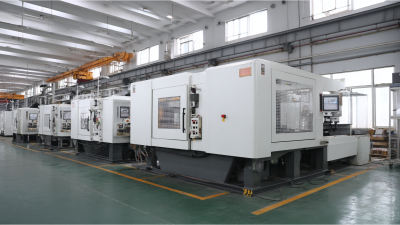
As we delve into the future of manufacturing, the role of advanced technologies has never been more pivotal, with laser cutting CNC machines standing out as transformative tools in the industrial landscape. These machines are revolutionizing the way materials are processed, offering unparalleled precision and efficiency that traditional methods struggle to match. The advent of laser cutting CNC technology not only streamlines production workflows but also enhances design possibilities, allowing for intricate and complex shapes to be produced with ease.

In this exploration, we will uncover practical tips and insights regarding the utilization and advantages of laser cutting CNC machines in various manufacturing sectors. From automotive to aerospace, the applications of this technology are vast and diverse. As the manufacturing industry continues to evolve, understanding the capabilities and best practices for laser cutting will be essential for businesses aiming to stay competitive. Embracing this innovative equipment could very well define the future landscape of manufacturing, proving advantageous for both small-scale workshops and large industrial enterprises alike.
The evolution of laser cutting technology has significantly transformed modern manufacturing, enabling industries to achieve higher precision, efficiency, and versatility. According to a report by MarketsandMarkets, the global laser cutting market is projected to grow from USD 4.4 billion in 2020 to USD 7.3 billion by 2025, reflecting a compound annual growth rate (CAGR) of 10.4%. This rapid growth is driven by the technology's ability to accommodate complex designs and materials, improving production rates while minimizing waste.
Historically, traditional cutting methods were often limited by their inability to manage intricate designs and thicker materials. Laser cutting addressed these challenges with exceptional accuracy and speed. Modern machines can cut materials ranging from metals to plastics with minimal kerf width, reducing post-processing requirements. A study by Allied Market Research also reveals that the adoption of fiber laser cutting technology is expected to dominate the market, attributed to its energy efficiency and lower operational costs compared to CO2 lasers. As industries continue to embrace these advancements, laser cutting is set to play a pivotal role in the future landscape of manufacturing.
The integration of CNC laser cutting machines into production lines represents a significant evolution in manufacturing processes. According to a report by MarketsandMarkets, the global CNC laser cutting market is projected to reach $5.2 billion by 2025, growing at a CAGR of 6.5% from 2020. This growth reflects the increasing demand for precision and efficiency in manufacturing, attributes that laser cutting technology inherently offers.
One of the key advantages of CNC laser cutting machines is their ability to deliver exceptional cutting accuracy. Unlike traditional methods, laser cutting allows for intricate designs and shapes to be produced with a tolerance of up to ±0.1 mm. This precision not only reduces material waste but also minimizes the need for secondary operations, thus enhancing overall production efficiency. Additionally, laser cutting systems can operate at high speeds, enabling manufacturers to significantly reduce production cycles and respond swiftly to market demands, further solidifying their competitive edge.
Furthermore, the versatility of CNC laser cutting machines enables manufacturers to work with a wide range of materials, from metals to plastics and beyond. This adaptability is crucial as industries increasingly seek to diversify their product offerings, making laser cutting an invaluable asset in modern production lines. With these advantages, companies not only improve their operational performance but also position themselves strategically in an evolving marketplace.
The cost efficiency of laser cutting CNC machines compared to traditional machining methods is increasingly pivotal in modern manufacturing. According to a report by the International Journal of Advanced Manufacturing Technology, laser cutting can reduce production costs by up to 30% due to its precision and speed. Unlike traditional machining, which often requires multiple setups and tooling changes, laser cutting streamlines the process, allowing manufacturers to achieve quicker turnaround times and higher throughput.
Furthermore, the reduced waste generated by laser cutting further enhances its cost efficiency. Research from the National Institute of Standards and Technology indicates that precision laser cutting can minimize material waste by up to 15%, translating directly into savings. This is particularly significant for industries such as aerospace and automotive, where raw material costs can be substantial. As manufacturers seek to optimize their production processes, the adoption of laser cutting technology not only contributes to lower operational costs but also promotes sustainable practices by reducing excess material use.
The laser cutting CNC machines segment is poised for significant growth in the upcoming years, driven by advancements in technology and increasing demand across various industries. The global market for laser cutting machines is projected to expand from $6.85 billion in 2025 to $14.14 billion by 2032, reflecting a robust compound annual growth rate (CAGR) of 10.9%. This rise is attributed to the growing emphasis on precision manufacturing and efficiency, as companies seek to improve their production capabilities while reducing operational costs.
In conjunction with this growth, the overall industrial laser market is expected to increase from $23.9 billion in 2025 to $55.09 billion by 2032, marking a CAGR of 12.7%. This trend underlines the pivotal role of laser technologies in the future of manufacturing. Furthermore, the metal fabrication market is anticipated to see an increase from $82.09 billion in 2024 to $100.82 billion by 2033, driven by consistent advancements in laser cutting techniques that enhance material processing speeds and quality.
As these technologies evolve, they will undoubtedly redefine manufacturing processes across various sectors, solidifying their place in the industry's future.
Laser cutting CNC machines are revolutionizing the manufacturing industry with innovative applications across various sectors. One compelling case study involves an automotive manufacturer that integrated laser cutting technology into its production line. By using laser cutters, the company significantly enhanced precision in metal fabrication, allowing for the creation of intricate components that traditional cutting methods could not achieve. This upgrade not only improved the overall quality of the vehicles but also reduced material waste, ultimately leading to cost savings and a more sustainable production process.
Another example can be found in the aerospace industry, where manufacturers have adopted laser cutting for complex parts fabrication. A leading aerospace firm utilized laser cutting to produce lightweight structures from high-strength materials. This innovation has enabled the company to push the boundaries of design while ensuring safety and performance standards are met. As a result, the integration of laser cutting technology has streamlined their workflows, enabled rapid prototyping, and shortened lead times, demonstrating the significant impact of laser cutting innovations on manufacturing efficiency and product development.
